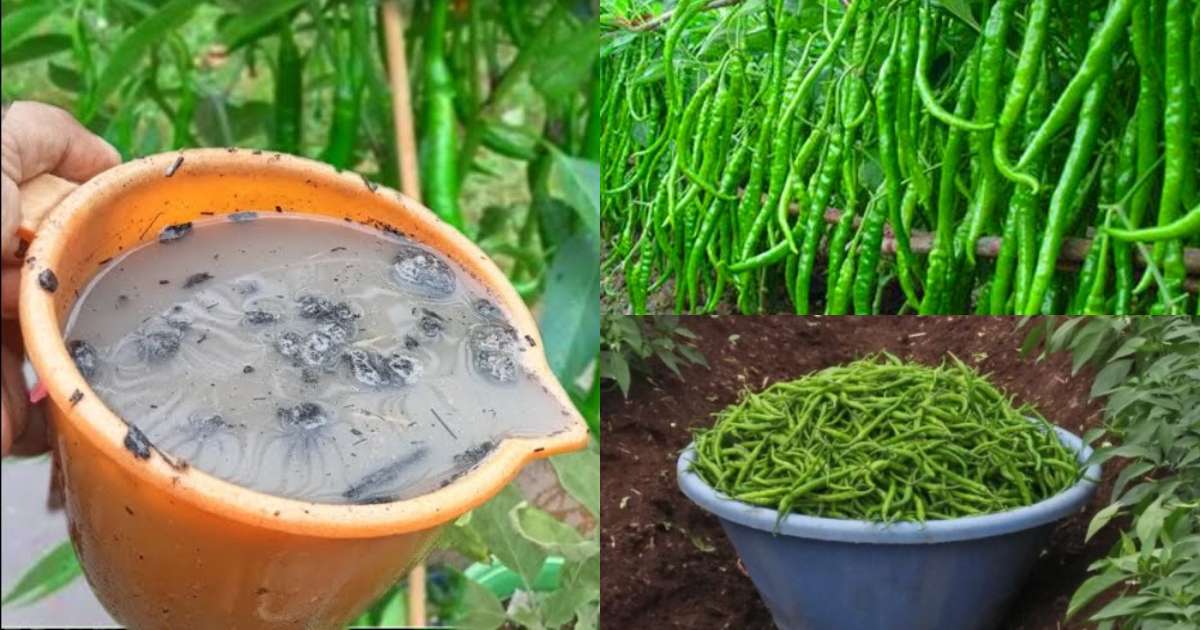
ചെടി നിറയെ മുളക് കായ്ച്ചു കിട്ടാനായി ഇതൊന്നു പരീക്ഷിക്കൂ.!! ഇത് ഒരു കപ്പ് മാത്രം മതി പച്ചമുകിൽ പോയ വന്നു നിറയും; മുളക് നിറയെ ഉണ്ടാവാൻ.!! Chilly farming using Ash
Chilly farming using Ash : “ഇത് ഒരു കപ്പ് മാത്രം മതി പച്ചമുളകിൽ പോയ വന്നു നിറയും മുളക് നിറയെ ഉണ്ടാവാൻ വെറുതെ കളയുന്ന ഇത് മതി | മുളക് പൊട്ടിച്ചു മടുക്കും പരീക്ഷിച്ചു നോക്കൂ” വീട്ടാവശ്യങ്ങൾക്കുള്ള പച്ചമുളക് പോലുള്ള പച്ചക്കറികളെല്ലാം വീട്ടിൽ തന്നെ കൃഷി ചെയ്തെടുക്കുന്നതാണ് എപ്പോഴും നല്ലത്. കാരണം കടകളിൽ നിന്നും ലഭിക്കുന്ന പച്ചക്കറികളിലും മറ്റും കൂടുതലായി കീടനാശിനികൾ അടിച്ചിട്ടുണ്ടാകും. എന്നാൽ ഇത്തരത്തിൽ
വളർത്തിയെടുക്കുന്ന ചെടികളിൽ എപ്പോഴും ചെറിയ പ്രാണികളുടെയും മറ്റും ശല്യം കാരണം ഉദ്ദേശിച്ച രീതിയിൽ കായ്ഫലങ്ങൾ ലഭിക്കാറില്ല. അത്തരം സാഹചര്യങ്ങളിൽ തീർച്ചയായും പരീക്ഷിച്ചു നോക്കാവുന്ന ഒരു മരുന്നിന്റെ കൂട്ട് വിശദമായി മനസ്സിലാക്കാം. ചെടി നിറച്ച് പച്ചമുളക് കായ്ക്കാനായി വിത്ത് തിരഞ്ഞെടുക്കുമ്പോൾ മുതൽ ശ്രദ്ധിക്കേണ്ടതുണ്ട്. വിത്ത് നടാനായി തിരഞ്ഞെടുക്കുമ്പോൾ നന്നായി പഴുത്ത് ഉണങ്ങിയ വിത്ത് നോക്കി വേണം തിരഞ്ഞെടുക്കാൻ.
ഇത്തരത്തിൽ തിരഞ്ഞെടുത്ത വിത്ത് മണ്ണും ചകിരിച്ചോറും മിക്സ് ചെയ്ത പോട്ടിലേക്ക് ഇട്ട് മുളപ്പിച്ചെടുക്കുക. ചെടി ചെറുതായി വളർന്നു കഴിഞ്ഞാൽ അത് ഒരു വലിയ ഗ്രോ ബാഗിലേക്ക് മാറ്റി നടണം. അതിനായി ഗ്രോ ബാഗിൽ ആദ്യത്തെ ലയർ കരിയിലയും അതിനുമുകളിലായി മണ്ണും, മിക്സ് ചെയ്യുക. അതിന് നടുക്കായി ഒരു ചെറിയ കുഴിയെടുത്ത് ചെടി നട്ടു കൊടുക്കുക. ചെടി വളർന്നു തുടങ്ങിക്കഴിഞ്ഞാൽ അതിനാവശ്യമായ വളപ്രയോഗം നടത്താം.
അതിനായി കഞ്ഞി വെള്ളമെടുത്ത് അതിലേക്ക് രണ്ടു പിടി ചാരമിട്ട് നല്ലതുപോലെ ഇളക്കി മിക്സ് ചെയ്യുക. ഇത് ഒരു ദിവസം പുളിപ്പിക്കാനായി വയ്ക്കുക. പിറ്റേദിവസം ആവശ്യത്തിന് വെള്ളം കൂടെ ചേർത്ത് വളം ഫെർമെന്റ് ചെയ്ത ശേഷം ചെടിയിൽ ഒഴിച്ചു കൊടുക്കാവുന്നതാണ്. ഈ ഒരു രീതിയിൽ പരിചരണം നൽകുകയാണെങ്കിൽ പ്രാണികളുടെ ശല്യമൊന്നും തന്നെ ചെടികളിൽ ഉണ്ടാവുകയില്ല, കൂടാതെ നല്ല രീതിയിൽ വിളവ് ലഭിക്കുകയും ചെയ്യും. വിശദമായി മനസ്സിലാക്കാൻ വീഡിയോ കാണാവുന്നതാണ്. Chilli farming using Ash Video Credit : Shalus world shalu mon
Chilli farming using Ash
Soil and Climate:
- Chilli plants thrive in well-drained loamy soil that is fertile and rich in organic matter, with a pH range from 6.0 to 7.5. Avoid waterlogged or saline soils as they promote root diseases.
- The ideal temperature for chilli cultivation is between 20°C and 25°C. Chillis need ample sunlight and are sensitive to frost and heavy rainfall, which can harm fruit set.
Seed Selection and Nursery:
- Use high-quality seeds from certified sources or organically grown plants.
- Seeds are typically sown in nursery beds or protrays and seedlings are transplanted after 40-45 days when they are strong enough.
Planting:
- Transplant seedlings onto prepared ridges or furrows with spacing approximately 60 cm x 45 cm for varieties and up to 75 cm x 60 cm for hybrids.
- Proper land preparation includes thorough ploughing, incorporation of farmyard manure (FYM), and use of bio-fertilizers like Trichoderma viride or Pseudomonas fluorescens to prevent soil-borne diseases.
Watering and Irrigation:
- Chillies require consistent moisture but avoid overwatering. Drip irrigation is recommended to maintain even soil moisture and reduce water waste.
- Irrigate once a week or as needed depending on weather and soil texture.
Fertilizer and Nutrient Management:
- Balanced fertilizer application is crucial. Use higher nitrogen during vegetative growth and increase potassium during flowering and fruiting.
- Organic amendments like compost or vermicompost improve soil fertility and structure.
Pest and Disease Control:
- Regular monitoring for pests like aphids, thrips, and diseases such as bacterial wilt.
- Use integrated pest management including biological controls and safe agrochemical applications when necessary.

Comments are closed.